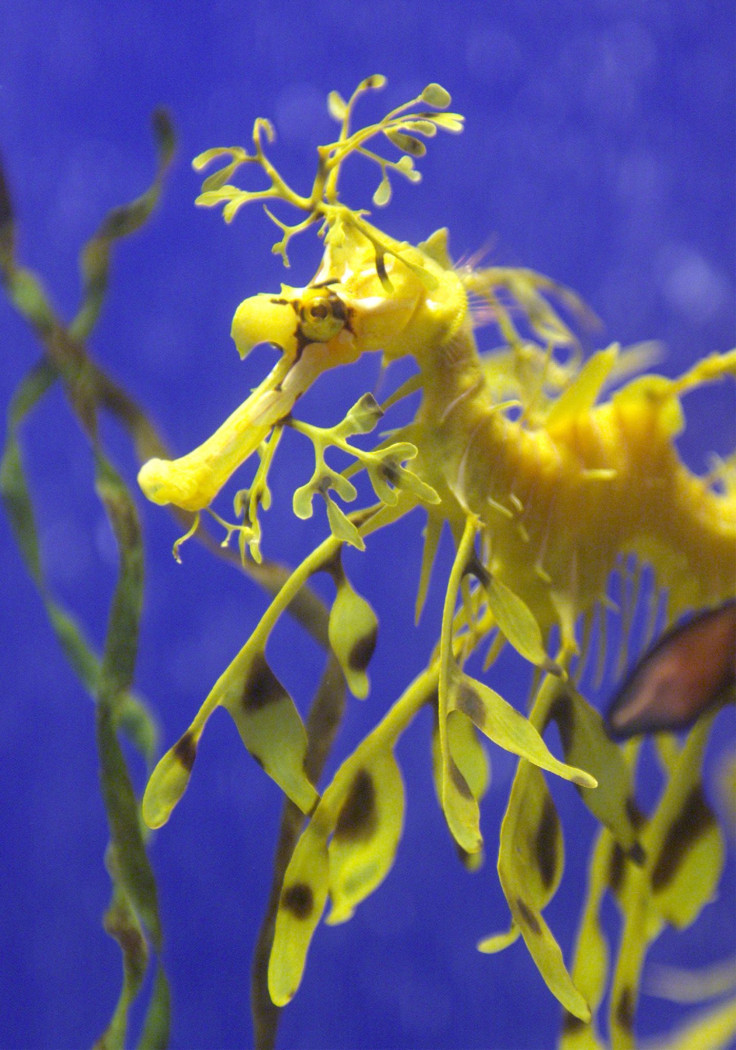Biologists Discove New Ruby Red Seadragon In Australia

A new species of ruby red coloured seadragon was discovered in Western Australia, says Josefin Stiller and team in a study published in The Royal Society. Stiller, a marine biologist at Scripps Institution in California, describes the newly discovered seadragon as a mesmerising beauty and is highly unexpected. It is to be noted that this is the first time in about 150 years a new species of seadragon is discovered.
The seadragon found in the Western Australian Museum was 24 cm long, ruby red coloured, pregnant female carrying dozen of babies, caught in 2007, off the remote Recherche Archipelago near Australia's southern coast, reported the study. The ruby red seadragon gets the biological name Phyllopteryx dewysea , as it is morphologically and genetically different from the two other seadragon varieties, the leafy seadragon (Phycodurus eques) and the common seadragon (Phyllopteryx taeniolatus) found in the Australia’s southern coast.
In the DNA analysis of its mitochondria, it was observed that the ruby seadragon was 7.4 and 13.1 percent different from the common seadragon and the leafy seadragon, respectively. Unlike other seadragons that live in the water as deep as 108 feet, Ruby seadragon could be living at a depth of 236 feet. This could be the reason why the new species was not discovered for so long, say the researchers.
The red colour would have helped these species to camouflage in the deep waters as red colour doesn’t penetrate very deep, and hence, they would appear relatively black, says Stiller. A new species found at a shallow depth in the Australian southern coast, which is largely explored than Australia’s exclusive economic zone, is surprising, said the researcher. She also added that it is far more surprising that how a relatively large, brightly coloured and charismatic species of seadragon escaped recognition until then. It indicates that there are more and more new species’ yet to be discovered in the shallow and deep waters of Australia, said the researcher.
To report problems or to leave feedback about this article, e-mail: saranya@ibtimes.com.au





















